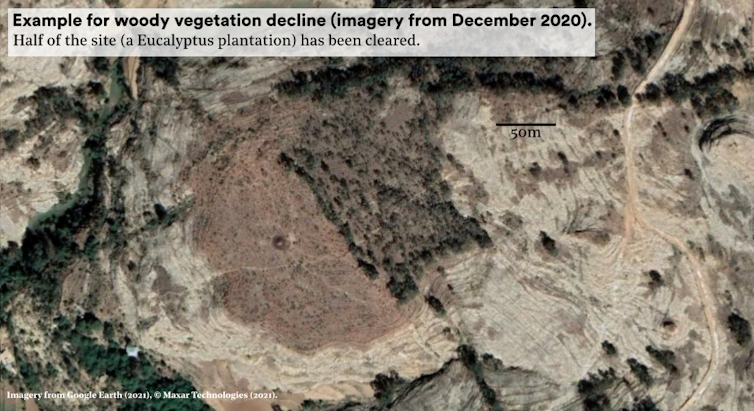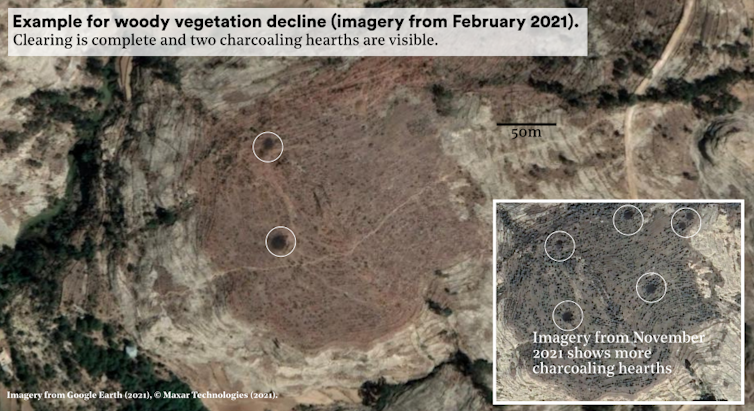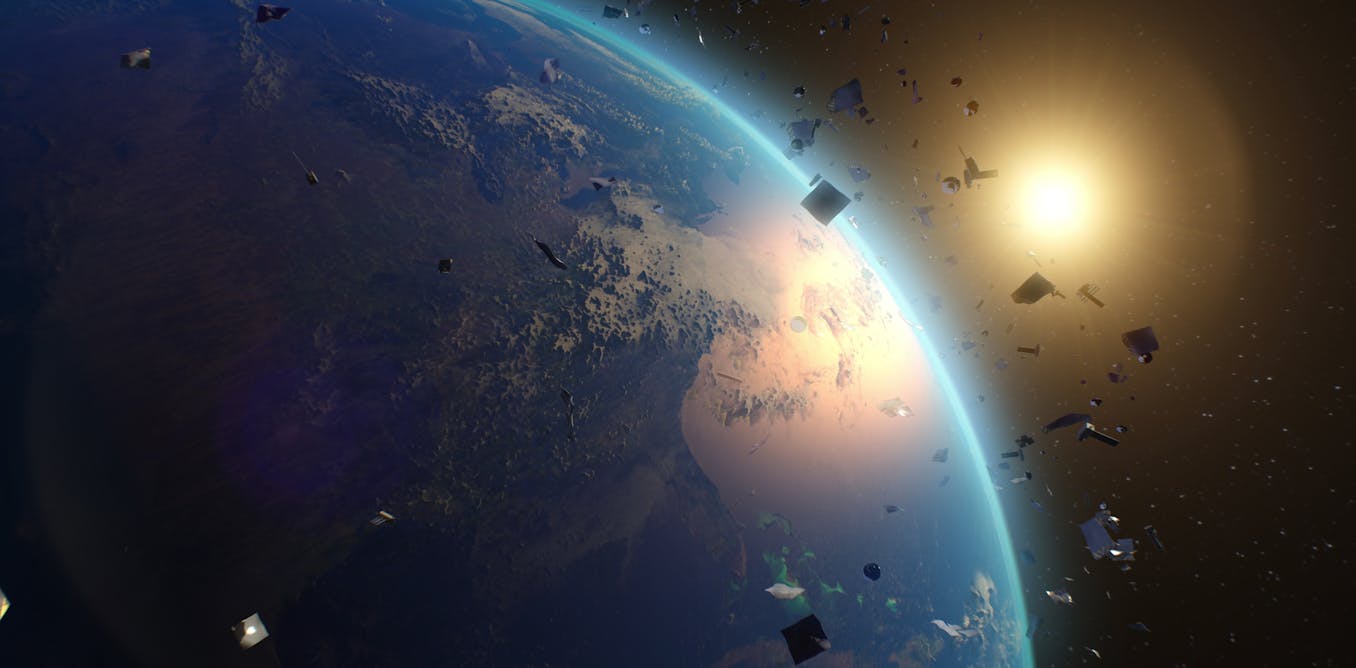[ad_1]
An ongoing conflict between the Ethiopian authorities and its allies towards Tigray, one in all its northern states, has led to one of many world’s largest humanitarian crises.
We’ve used satellite tv for pc information to trace how the battle and ensuing vitality disaster has additionally damaged the connection between people and nature. Individuals have been compelled to make use of firewood, inflicting a lack of vegetation in a area on the forefront of environmental rehabilitation. That’s the important thing discovering of our new report revealed by the Battle and Atmosphere Observatory.
Tigray is semi-arid, and other people there, like most of Ethiopia’s inhabitants, depend upon subsistence agriculture fed by rainfall for a big a part of their food regimen. When cropping is disrupted by inadequate rainfall or different causes, various sources of revenue or meals are additionally usually inadequate, contributing to catastrophic famines, comparable to within the Eighties.

Google Maps
Standard agricultural improvement insurance policies – comparable to farmers’ entry to fertilisers, loans or markets – have solely had modest results on productiveness. Within the Nineteen Nineties, the Tigray authorities as an alternative adopted a conservation-based coverage to handle persistent meals insecurity and low agricultural productiveness.
The brand new technique targeted on making the land higher at retaining water and soil, two key elements of agricultural manufacturing. This meant constructing stone and soil berms (raised boundaries) that slowed down overland water flows, lowering erosion charges.
It additionally meant creating ponds during which runoff water may very well be saved. And it concerned banning livestock grazing and wooden slicing in patches of degraded land so it may regenerate. These “exclosures” act like sponges, permitting rainwater to infiltrate the soil relatively than working off.

Guenter Fischer / Alamy
Over three a long time, this method remodeled the Tigrayan panorama, resulting in widespread restoration of timber and shrubs, decreased erosion and rising groundwater tables. This allowed the growth of irrigated agriculture and, most significantly, agricultural yields certainly elevated.
Terraces, which decelerate the stream of water and lure soil, are seen on these mountain slopes. Over the previous few a long time, folks throughout Tigray have labored – typically in trade for meals or cash, however usually unpaid – to create such soil and water conservation buildings, remodeling the panorama and making it extra productive.
Why conflict is unhealthy information for timber
Nevertheless, this success has now come underneath risk from the conflict which started in November 2020. Since then, the area has been underneath a blockade, resulting in a collapse in meals and gasoline provides. Electrical energy has been disrupted and unreliable, and banking and telecommunication companies have been suspended.
This has created an enormous humanitarian disaster: 1.8 million folks have been displaced distant from their properties, and 83% of individuals in Tigray are estimated to face acute meals shortages.
Lower off from various provides for cooking gasoline, folks might have to show to native sources of wooden, regardless of laws towards slicing vegetation in exclosures. Contacts in Tigray shared with us their issues in regards to the pressures that the vitality disaster is placing on timber and shrubs. And vegetation declines have been certainly seen within the few open-access, high-resolution satellite tv for pc photographs accessible on Google Earth taken after November 2020.

Google Earth / Maxar Applied sciences, Creator offered

Google Earth / Maxar Applied sciences, Creator offered
Nevertheless, it was troublesome to gauge the extent of the issue because the area stays largely inaccessible. We due to this fact turned to open-access information from the EU’s Copernicus satellites, which offer frequently up to date photographs of the entire of Tigray.
We seemed for areas the place woody vegetation had declined for the reason that begin of the conflict, and located sure hotspots with a powerful lower in NDVI, a generally used index for greenness of the panorama. Potential various drivers of those declines – rainfall, temperatures, fires and locust outbreaks – confirmed little overlap with these hotspots of woody vegetation decline.
Woody vegetation continued to thrive in different places in Tigray throughout the identical interval, however – when in comparison with pre-conflict years – vegetation restoration was subdued. This led us to conclude that declines have been probably being intensified by the battle.
The historical past of the Tigrayan panorama exhibits that shedding woody vegetation cowl results in soil erosion and water run-off, reducing agricultural productiveness in a area already affected by widespread starvation and anticipating one other drought this 12 months. In the long run, pressures from local weather change – together with growing downpours, which may contribute to erosion, and droughts – are more likely to proceed.
Woody vegetation, a key soil and water conservation element, is thus being eroded at a time when it’s essential to the long-term wellbeing of individuals in Tigray. On a extra optimistic be aware, earlier panorama restoration efforts are offering a buffer for the environmental impression of the conflict, as losses of woody vegetation are probably occurring from a better baseline than they’d have beforehand.
But we nonetheless don’t know what impression the conflict may have on the area’s wildlife or water cycles. Neighbouring areas comparable to Amhara and Afar, into which the battle has spilled since July 2021, may be affected.
It is necessary that the environmental impacts of the conflict are absolutely assessed on the bottom to tell restoration methods. Provided that the surroundings thrives can the long-term wellbeing of individuals in conflict-affected areas be assured.
[ad_2]
Source link















